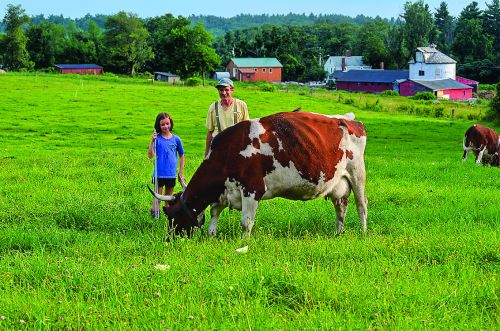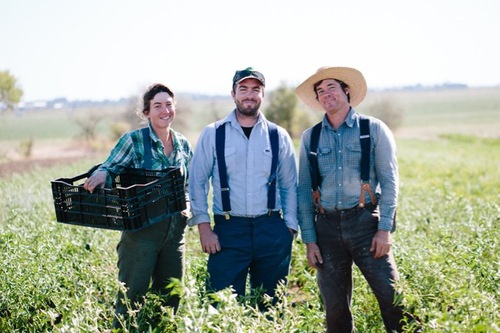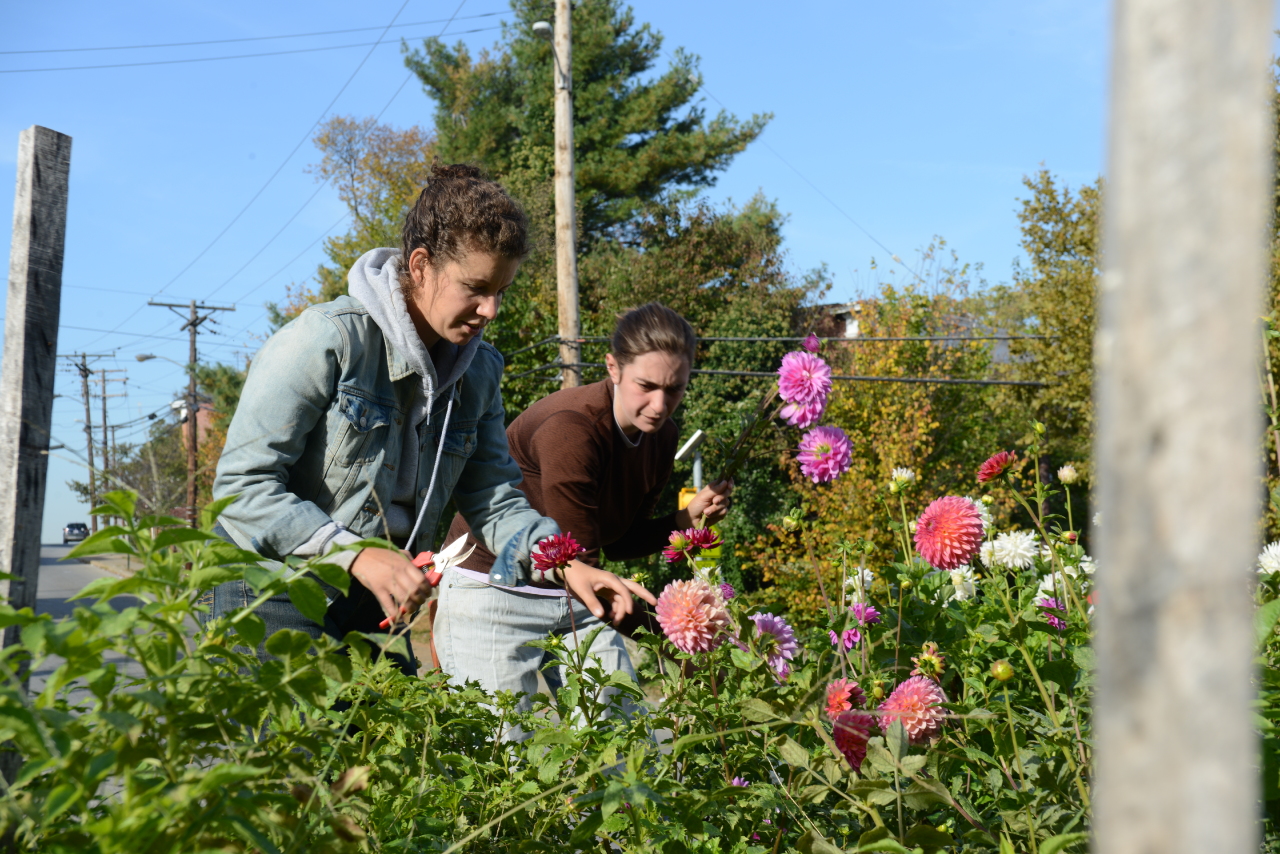Creative Leasing
 Overview
Overview
Before describing examples of creative leasing arrangements, it is important to define a basic farm lease. A farm lease is a written agreement between a landowner and a tenant farmer. Through a farm lease, the landowner grants the tenant farmer the right to use the farm property. Key terms of basic leases include the length of the lease, rent amounts and frequency of payment, how to renew or end the lease, and more. A farm lease is a binding contract between the landowner and the farmer tenant. Read more about the basics of farm leases here, or start building your own farm lease using our Farm Lease Builder.
Beyond basic farm lease terms, landowners and tenant farmers have a lot of flexibility to creatively address their individualized needs and limitations. Certain kinds of creative lease arrangements provide unique and valuable benefits to farmers, landowners, and farmland alike, including the opportunity for tenant farmers to build equity in the leased farm, or the incentive to use environmental conservation measures in farm management. These creative lease arrangements are generally significantly more complex than a basic farm lease, however, and generally require help from a lawyer to create a strong, effective lease arrangement.
Below are some examples of creative lease arrangements, along with links to stories about farmers that have used these types of arrangements. It is important to realize, though, that the innovative lease arrangements discussed here are only examples of some of the many types of creative leasing arrangements that a tenant farmer and a landowner could use. The examples here can be combined with each other and/or used together with other types of lease provisions. Please see the Questions To Consider and Leasing Resources pages for more information about basic and creative farm leasing.
As noted, the extent of creative leasing arrangements is limited only by the imaginations of the landowner and the tenant farmer (and by certain legal limitations). Following is a discussion of the most common innovative leasing concepts.
Ground Leases
In a ground lease, the farmer rents only the farmland and does not rent any of the buildings on the property. A ground lease can allow the tenant farmer to purchase existing buildings on the land (or build her own buildings on the rented land) during the lease period. This type of arrangement lowers the amount of up-front money a new farmer needs to access land (because she is renting rather than buying, and therefore does not need a down payment or a mortgage loan) while simultaneously allowing a new farmer to build equity by owning or constructing farm buildings on the rented land over time. Also, if a ground lease tenant is renting only the land (rather than land plus buildings), the rent is generally lower.
The main benefit for landowners in a ground lease situation is that they retain some control over the farmland (as opposed to selling the farmland and losing control to a buyer). Typically, ground leases are long-term, such as 50, 75, or 99 years. Sometimes, as in the case of the Temple-Wilton farm, land trusts or nonprofit organizations with farmland preservation goals will rent land to farmers via ground lease at nominal rates, such as $1 per year.
Ground leases raise tricky issues about the value of any permanent buildings or other permanent improvements (irrigation, certain fences, etc.) that the tenant farmer adds to the land. Typically, the lease should provide some sort of system for the landowners to compensate the tenant farmer for permanent improvements the tenant farmer adds to the land (or could provide an option for the tenant farmer to purchase the property).
For example, a farmer might lease 100 acres of farmland for 10 years. Over those 10 years, the farmer might build “permanent improvements” such as a hoop house, a greenhouse, a well, and a processing barn. These are permanent improvements because they are not designed to be removed from the land at the end of the lease, and are therefore “permanently” attached to the land. When the ground lease ends and the tenant farmer leaves the property, the lease should ensure that the landowner pays the farmer for the value of these permanent improvements. The question then becomes, “What is the value of these permanent improvements?”
To determine the value of permanent improvements, and as a best practice, an appraisal could be done at the beginning of the lease and at the end of the lease. The increase attributable to the improvements built by the tenant farmer would be the value of the permanent improvements. An alternative mechanism to compensate the tenant farmer for permanent improvements could be the appraised value of these improvements (irrigation system, barn, etc.) minus any depreciation.
While providing land access options for farmers lacking enough capital to purchase land outright, a ground lease involves more technical and complicated issues than a basic farm lease. As a result, farmers contemplating a ground lease should consider getting help from a lawyer with experience working with farmers, as well as an experienced appraiser. Equity Trust provides an example of a ground lease here.
Farmer Spotlight:
Temple-Wilton Community Farm

The Temple-Wilton Community Farm has been operating a year-round CSA (community supported agriculture) program since 1986, making it the oldest continually-running CSA in the country. The 200-acre farm supplies 110 CSA member families with over 40 different kinds of vegetables and herbs, milk, cheese, yogurt, eggs, beef, veal, pork, and chicken.
As part of Temple-Wilton’s complex journey to secure long-term land tenure, the Temple-Wilton farmers worked with the Yggdrasil Land Foundation to purchase land and lease it back to the farmers via a 99-year ground lease for $1 per year. The Temple-Wilton farm owns the buildings and structures on the land. To learn more about this creative leasing arrangement, click here.
Equity-Building Provisions
Equity means the value that has built up in a property. Equity in farmland can build because of the passage of time and the general, society-wide increases in the value of property, or it can build because valuable things are added to the land, such as barns, greenhouses, irrigation systems, improved soil, and other agricultural assets.
Unless a lease says otherwise, equity in a property always belongs to the landowner. In the absence of a lease agreement to the contrary, that means that if a tenant farmer builds a $50,000 barn (increasing the property value from $250,000 to $300,000) the tenant farmer will never recoup that $50,000 increase in equity. Understanding that this is generally an unfair arrangement and that it may prevent tenant farmers from wanting to or being able to construct improvements, farmers have developed creative leasing strategies to share equity and compensate tenants for investing in rented land.
When tenant farmers have lease provisions that require them to be paid back for some of the investments they make in the land, tenant farmers are incentivized to invest in rented farmland because they are more likely to reap the benefits of their efforts over time. An equity-sharing arrangement often benefits the landowner as well, because when tenants invest in improvements, both the farm itself and the lease arrangement have a better chance of being viable long-term.
Farmer Spotlight:
Say Hay Farm

Chris Hay and his mother Sarah founded Say Hay Farms in 2010 on 2.5 acres of land with 100 hens. Seven years and several leases later, Chris is the owner of Say Hay Farms in Esparto, Yolo County, California. Due to Chris’s strong relationship with his landlords, an equity-building provision that will repay Chris for planned investments in the property, a long 34-year lease term, and an option to purchase, Chris feels comfortable investing in the property as if he owned it (to the tune of over $150,000 in permanent improvements including a new well, pump and filter, barn renovation, walk-in cooler, and solar panels).
Click here to read about how Chris used a lease to protect his investments in rented farmland.
Lease-To-Own
A “lease-to-own” or “rent-to-own” agreement is a type of lease that provides an option to purchase the property within a specified period of time at a price or by a formula that is set at the time of signing the lease agreement. Read more about lease-to-own here.
Leasing from Public Land
A unique situation that allows farmers to access land that would otherwise be unavailable is the opportunity to lease public land. For example, in Ohio, the National Park Service and the Countryside Conservancy offer farmers long-term leases to engage in sustainable agriculture in the Cuyahoga Valley National Park. Read more about the Greenfield Berry Farm in Cuyahoga Valley here, and read about how the nonprofit Urban Edge Farm has developed a farm incubator on public lands in Rhode Island here.
Farmer Spotlight:
Hillen Homestead

Photo credit: Andy Cook
Baltimore, Maryland, is home to over a dozen urban farms, most of which are located on city-owned vacant property. Most of these farmers and gardeners access the land with a short-term “Adopt-a-Lot” agreement, but in 2011 the City issued a call for qualified farmers for a new, more stable long-term leasing program. Maya Kosok of Hillen Homestead has been farming her two plots of city-owned land for several years through the Adopt-A-Lot program, and as of early 2017 is in the process of becoming the fourth farmer (and the second for-profit) to sign a five-year lease agreement for her profitable flower operation. Read more about how Maya has worked to lease public land here.
Leasing Land with Conservation Easements and/or OPAVs
Generally, conservation easements and OPAVs (Options to Purchase at Agricultural Value) lower the fair market value of the property they are associated with (as well as making sure that the property is not developed and/or continues being farmed).
Because conservation easements and OPAVs reduce the value of farm property and associated property taxes, the landowner should be able to rent this type of farm property at a reduced rental price. However, in this situation, the landowner needs to make sure that the tenant farmer understands and can satisfy the requirements of any conservation easement or OPAV. The terms of an easement or OPAV might limit the tenant’s intended use of the property in some important respects, so tenants renting land with attached easements or OPAVs should make sure they fully understand the restrictions on the land and how those restrictions might impact planned operations before signing a lease.
As a result of an easement or OPAV terms and limitations, a farm lease will be more complicated because it will have to include a lot of the provisions required in the conservation easement and/or OPAV. In some cases, the legal easement or OPAV documents might be incorporated into the lease or attached to the lease.
Perspectives
Creative leases can come with tremendous benefits, including saving up-front costs and recouping investments for tenant farms and retaining control for landowners. However, they are complicated. Creative leases, by their very nature, require more negotiation between the tenant farmer and the landowner upfront. This results in longer and more complex lease agreements, and requires more interaction between the tenant farmer and landowner over the course of the lease period. Because of this complexity, creative leases may not be appropriate for very new farmers still learning the art and science of agricultural production. Ideally, creative leases would involve relatively sophisticated landowners and tenant farmers with enough agricultural experience to root themselves in one place for decades to come – and sufficient resources to hire experienced technical experts, such as lawyers and appraisers.
 How an Attorney Can Help
How an Attorney Can Help
The Attorney’s Role
It’s not an attorney’s job to make decisions for farmers or to set farm transfer goals. Instead, attorneys can provide information about pros and cons of different options, advice about what is common versus unusual, fair versus unfair, etc. Attorneys can help farmers understand the universe of possible farm transfer goals and help narrow down individual options so that farmers can make final decisions.
How An Attorney Can Help With Creative Leasing
- Help farmers understand how to create leasing arrangements.
- Help determine what type of creative arrangements would best achieve the needs of landlord and tenant.
- Write appropriate lease terms.
- Help farmers consider the pros and cons of innovative lease terms versus a basic farmland lease.
- Provide strategy advice for lease negotiations.
 Additional Resources
Additional Resources
See the Leasing Resources page.
Related Legal Tools



The Center for Agriculture and Food Systems is an initiative of Vermont Law School, and this toolkit provides general legal information for educational purposes only. It is not meant to substitute, and should not be relied upon, for legal advice. Each farmer’s circumstances are unique, state laws vary, and the information contained herein is specific to the time of publication. Accordingly, for legal advice, please consult an attorney licensed in your state.
